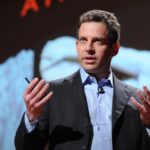This is Part II of my meditation on…meditation. Part I focused on my introduction to mediation: what I used to think about it and what caused a change. A confluence of experience, various readings, and word of mouth convinced me that I was missing something. I decided my assumptions were, as they have often proven to be, wanting of serious inquiry.
In this Part II, “Meditation – Debunking Myths and Social Proof” I will examine who else besides Ray Dalio has sung meditation’s praises and what the experts say on the common misconceptions of mediation.
Part III, “Meditation – Data, Dissent, and My Conclusion” will be the final piece of this post.
Let’s dive in…
[Approximately 12 minutes reading out loud]Life Practices of the Rich and Famous
My little episode referenced in Part 1 and my subsequent snooping around had me very curious about meditation. However, for me to be a true believer, I required further investigation.
I wanted to see some hard data and the perspective of the scientific community. It has always been hard for me to take things just on faith alone – for better or worse.
So, I started where one must always start when investigating matters of science and extreme gravity — we’re going

http://i.dailymail.co.uk
Now, of course I am being ironical (Gerry). In Tinsel Town, you are just as likely to come across Scientology as you are science. But LA happens to be where a lot of “Successful” people live. And as Robert Cialdini notes in his iconic book, Influence, social proof can be a powerful tool of persuasion.
 I will define “Success” (or “Achiever”) here in a narrow way – the top performers in a field they have chosen, measured by what seem to be the common measurements of excellence in that field. For example, with respect to acting, that may be academy awards, highly respected by peers, apparent demand, etc.
I will define “Success” (or “Achiever”) here in a narrow way – the top performers in a field they have chosen, measured by what seem to be the common measurements of excellence in that field. For example, with respect to acting, that may be academy awards, highly respected by peers, apparent demand, etc.
Prior to looking into the matter more deeply, I had become loosely aware that many of these “Achievers” practiced some form of mindfulness training. However, I had no idea just how pervasive the practice was.
It was also shocking to note that these weren’t borderline performers; these people were at the absolute TOP of these various industries.
But by far most surprising was the large extent to which each Achiever credited meditation for their tremendous success. Most of them mentioned meditation as one of the crucial factors leading to their accomplishments. And some of them credited meditation exclusively.
OK – so who are we talking about?
You know the rules…Ladies first.
Stage and Screen
Nicole Kidman, Eva Mendes, Gwyneth Paltrow, Cameron Diaz, Jen Aniston.
These ladies do not come from similar backgrounds. They are from different countries and cultures and religions. They grew up in families of differing social classes. Their parents took up disparate professions.
But what do these award-winning actresses all have in common besides beauty and success? That’s right, meditation. And each of them credit mediation as being a key ingredient in their successes… and their beauty.

http://i.dlisted.com
Kidman, who has been meditating for 20 years, says once she realized the benefits – she made it a priority to never miss a day. Aniston says it’s “really changed everything” for her. She goes so far as to chalk up her continued youthful looks and beauty to meditation.
You manly men may be thinking – “ok, ok, so a bunch of chicks do it. How does that relate to me – a tough guy?”
Oh, a tough guy, I see — I know what to do with tough guys…
 Ever heard of Wolverine?! Here’s Hugh:
Ever heard of Wolverine?! Here’s Hugh:
“It’s helped me immeasurably in every way. I am a completely different person now that I am meditating.”
You may say, “But Hugh is a song and dance man… he’s not like me… I do CrossFit, crab cakes and football.” Fair enough.
How about Dirty mother-effin- Harry?! Eastwood has been meditating for 40 years… twice a day! How about Scorsese, Burt Reynolds, Richard Gere, or The Dude.
And not only do they meditate, but they, like Dalio, credit it for much of who they are and the success they’ve had. Here’s Scorsese in a recent interview speaking about his relatively newfound habit of meditation:

http://tmhome.com
“It’s difficult to describe the affect its has had on my life. I can only mention, maybe a few words: calm, clarity, a balance. And, at times, recognition. And it’s made a difference.”
Now, of course, these idols of Hollywood are famous for few other things. And not all of them are necessarily good examples to follow – even if some of these techniques positively impact their careers. So, it may not be a great idea to just blindly follow their advice.
I’m thinking of things such as: surgeries not often covered by insurance, sleeping “upwards,” and treating marriage like a car lease. But we shouldn’t necessarily do that, right?
Ok- so maybe the titans of stage and screen are not the best place to start. Perhaps you want to grow up to dominate the broadcasting airwaves…
TV Icons
Apparently, meditation is part of the factors that may lead you to one-name-fame like Ellen, Oprah and Howard – all avid meditators.
Here’s Oprah who reveres meditation so much that she has purchased Transcendental Meditation [a form of mediation] for her 400 employees and incorporated it into their regular company schedule. From a 2013 interview with Dr Oz:
http://i.huffpost.com
“9:00 in the morning, and 4:30 in the afternoon no matter what is going on, we stop and we meditate,” says Winfrey, ”And you can’t imagine what has happened in the company, people who used to have migraines, don’t. People are sleeping better, they are having better relationships and they are interacting with other people better. It’s been fantastic”
In reference to herself, Oprah says in an interview with Dr. Oz: “I’m a 1000 percent better person if I do this.”
Still not grabbing you? Tough crowd. Maybe you are more into following the lead of our athletic heroes? And we aren’t talking fringe players either.
Athletic Awareness
How about Lionel Messi – a footballer many agree is one of the best of all time. Additionally, most of England’s

http://innerchange.com.au
national team and a significant portion of the entire Premier League?
Not a soccer fan? Me either (we probably just don’t get it).
 Wanna be like Mike? MJ, Phil Jackson and the entire 1990s Championship Bulls teams used it as part of their secret sauce with the help of George Mumford. Phil later brought it to Kobe, Shaq and the championship winning Lakers.
Wanna be like Mike? MJ, Phil Jackson and the entire 1990s Championship Bulls teams used it as part of their secret sauce with the help of George Mumford. Phil later brought it to Kobe, Shaq and the championship winning Lakers.
Still not your thing?
Ever heard of Ray Finkel? (“Noooo…why isn’t he in this picture.”) Actually I don’t know if he did it – probably when he was the mule – probably not after he decided to dress in cross…
I’d throw in Broadway Joe, an avid meditator, but not sure he is the best role model…
Not a sports nut?
Mindful Musicians

http://i.dailymail.co.uk
OK- perhaps you want to succeed in the music industry. You might be interested in the daily practices of Sir Paul McCartney and the rest of the Beatles. How about The Beach Boys, the Doors, Lady Gaga, Sting, Mick Jagger, Eddie Vedder, John Denver, and Madonna.
Here’s Sir Paul:
“In moments of madness, meditation has helped me find moments of serenity — and I would like to think that it would help provide young people a quiet haven in a not-so-quiet world…For me it came at a time when we were looking for something to stabilize us towards the end of the crazy sixties…It’s a lifelong gift, something you can call on at any time.”
Move over, Mother Mary, the Big Buddha’s movin’ in.
OK OK let’s cut the chit chat, A-hole! “Enough of these artists and their weird, needy, impractical crap!”
I know – you’re all business. You can’t trust these dramatic athletes, prima-donnas, or even Ma-donnas. And, of course, that John Denver is full of shit..
This kinda crap doesn’t fly in the real world, right? You don’t have time for this. How is this going to help you with your TPS reports? Enter CEOs, Empire Builders and World-Changers…
The Executive Practice
Ray Dalio, Steve Jobs, Bill Ford, Russel Simmons, Rupert Murdoch, Arianna Huffington, Marc Benioff (Salesforce), Evan Williams (Twitter), Tony Robbins (as I’ve stressed before, he’s not just “Banana Hands” – he’s the owner of about 15 businesses and is worth about half a bill), Tim Ferriss, need I go on?
And, again, the credit they give is astonishing. They all echo Dalio.
If Tim Ferriss seems a strange member of that list, I think you have some reading to do. Tim has written several best-selling books, all very interesting in their own right. His most recent book, Tools of Titans: The Tactics, Routines, and Habits of Billionaires, Icons, and World-Class Performers, basically acts as a more in-depth, written version of his successful podcast. On the podcast, his job is to (via Tim’s blog) “deconstruct world-class performers from eclectic areas (investing, sports, business, art, etc.) to extract the tactics, tools, and routines you can use.”
So what was the most consistent habit / routine that Tim found amongst about 200 “world-class performers” he interviewed? Do I even have to say it?
Here’s Tim:
“More than 80% of the world-class performers I’ve interviewed have some form of daily meditation or mindfulness practice. Both can be thought of as ‘cultivating a present-state awareness that helps you to be nonreactive.’ This applies to everyone from Arnold Schwarzenegger (page 176) to Justin Boreta of The Glitch Mob (page 356), and from elite athletes like Amelia Boone (page 2) to writers like Maria Popova (page 406). It’s the most consistent pattern of them all.”
Funny, Tim. I found a similar thing in my research. Is this coincidence? Could be. We’ll address that more in the science section below.
Oh yea – there is just ONE MORE THING, Lieutenant..
Any interest in being like one of the funniest men of all time. Here’s Jerry Seinfeld, a 40 year TM practitioner, on Good Morning America:
“You know how your phone has a charger? It’s like if you had a charger for your whole body and
mind.”
Jerry has also credited it for helping him make it throughout his Seinfeld days:
Every day when everybody would have lunch I would do TM [Transcendental Meditation] and then I would eat while I was working because I had missed lunch but that is how I survived the 9 years [of Seinfeld], it was that 20 minutes in the middle of the day would save me.
And perhaps the best evidence for you liberals – Donald Trump DOES NOT mediate. Just kidding, I have no proof for this. My guess though is that he thinks it is the biggest disaster in this country since NAFTA.
 OK – so there are people doing this thing that are successful and famous. But famous people are weird right? I mean, a cultish sounding thing that has been by a lot of successful people…. Not exactly an open and shut case here.
OK – so there are people doing this thing that are successful and famous. But famous people are weird right? I mean, a cultish sounding thing that has been by a lot of successful people…. Not exactly an open and shut case here.
Yes, good point. As Cialdini says in influence regarding social proof:
“First, we seem to assume that if a lot of people are doing the same thing, they must know something we don’t. Especially when we are uncertain, we are willing to place an enormous amount of trust in the collective knowledge of the crowd. Second, quite frequently the crowd is mistaken because they are not acting on the basis of any superior information but are reacting, themselves, to the principle of social proof.”
On that note, let’s get a bit more authority.
How about we take a look at what the experts say – the supporters, the skeptics and the indifferent.
Let’s go to the experts on this one, Mo– MO!
***
Expert Group #1: Psychologist, Monk and Neuroscientist
“Suppose you read about a pill that you could take once a day to reduce anxiety and increase your contentment. Would you take it? Suppose further that the pill has a great variety of side effects, all of them good: increased self-esteem, empathy, and trust; it even improves memory. Suppose, finally, that the pill is all natural and costs nothing. Now would you take it?”
 These are the to-good-to-be-true words of EXPERT #1, Social Psychologist, NYU Stern School of Business professor and best-selling author, Jonathan Haidt. (IF you read this, this and this, you might notice I sorta have a thing for him. The jury is still out on the mutuality of that feeling…)
These are the to-good-to-be-true words of EXPERT #1, Social Psychologist, NYU Stern School of Business professor and best-selling author, Jonathan Haidt. (IF you read this, this and this, you might notice I sorta have a thing for him. The jury is still out on the mutuality of that feeling…)
Haidt explores this concept in his best-seller, The Happiness Hypothesis. In the HH, Haidt offers what he sees as the three best antidotes for very serious conditions like clinical depression: (i) cognitive therapy, (ii) medication like anti-depressants, and, you guessed it, (iii) meditation.
To my surprise, Haidt seems to conclude that meditation is quite possibly the most effective of the three – with equivalent or better upside and virtually none of the downsides of therapy (money) or pills (health and money).
I will address this conclusion in a second, but first, let’s meet our other experts.
EXPERT #2 – Andy Puddicombe. Andy, a former Buddhist monk, is the founder of the business and mobile

https://blog.zuora.com/
application, HeadSpace, a meditation app that has, according to Forbes, raised over $30mm in financing on the back of celebrities, business elites and athletes singing meditation’s praises.
With what I’ve heard is hundreds of thousands of users, paying $100 annually, Headspace is certainly creating value. [Whether or not that value creation is for the HeadSpace users or the company – we will address below].
Puddicombe also apparently serves as a sort of mediation consultant for many athletes, CEOs and artists world-wide.
In his book, The Headspace Guide to Meditation and Mindfulness: How Mindfulness Can Change Your Life in Ten Minutes a Day, Puddicombe explains what meditation is for, what the science says, and how to begin practically and simply.
Now, your instinct may be to say, “ok, obviously a monk is going to side with mediation. There’s nothing scientific there – that’s just as bad as a priest.”
I get it. These are legitimate concerns. Jesus knows I had them (see what I did there?). I would just ask you to suspend those knee-jerk conclusions until the end of my little spiel here.
It is also important to note a couple things: One – Andy is no longer a monk in the formal sense. He has totally integrated back into the lay life. Though, of course, he still maintains the expertise. To me, that makes him not less expert but more like a “daywalker;” a super-monk with a dynamite accent.
Two – He also wasn’t born in the “light” like Bane was born in the darkness. He seems to have had what might be called a typical childhood in a first-world democracy.
But still, I get it. He is, after all, bald.
How about a brain scientist? Does that qualify? Surely an expert on the 100-billion-neuron network might have

https://pi.tedcdn.com
something credible to say on the subject, right?
Let’s bring back the man from the beginning, Sam Harris, as EXPERT #3. Harris was a philosophy major at Stanford, then a best-selling author with his first book, The End of Faith, and then earned his Ph.D in Neuroscience at UCLA. Using his schooling and his personal experience with over 20 years of mediation, he wrote the phenomenally interesting book: Waking Up: A Guide to Spirituality Without Religion.
This is it for now. Now let’s use our experts to debunk some of the commonly held myths of mediation.
Meditation: Truth or Myth?
#1. Mediation is Hocus Pocus: MYTH

https://s-media-cache-ak0.pinimg.com
It may sound like a softball-lob to my point – but this is actually the way that I used to think of meditation. I put it in the same category as telepathy, levitation and this guy. It turns out his equally weird boss may have had it much closer to correct.
Here’s Sam Harris:
“There is nothing spooky about mindfulness. It is simply a state of clear, nonjudgmental, and undistracted attention to the contents of consciousness, whether pleasant or unpleasant.”
Puddicombe dumbs it down even more:
“There’s nothing mystical about it. Meditation is simply a technique to provide you with the optimum conditions for practicing the skill of mindfulness.”
He goes on..
“The fact is, our entire existence is experienced through the mind. We depend on it for our sense of happiness and fulfillment in life and for positive relationships with others. So taking a few minutes out of each day to train and maintain it is simply good common sense.”
So it might be that we are currently dazed in a Matrix-like mind and that meditation is not a trick or a hypnosis; rather – meditation is the relief from it.
#2 Meditation is only for men bald, robed, living in a bat cave and religious as the dickens: MYTH

http://1.bp.blogspot.com/
As we have already seen, a boatload of CEOs, artists, and athletes seem to do this very straight forward (but hard to master) practice. But are they all religious?
Well, it is probably good to point out here that at least two of the three (Harris and Haidt) of the experts I have referred to thus far are atheists. In fact, besides being a neuroscientist and meditation expert, Harris’ other life is spent in the gauntlet, shouting possibly true but possibly more antagonistic heresies at religious leaders.
Here’s Harris on spirituality without religion:
“One of the advantages of vipassana [a form of mediation] is that it can be taught in an entirely secular way. Experts in this practice generally acquire their training in a Buddhist context, and most retreat centers in the United States and Europe teach its associated Buddhist philosophy. Nevertheless, this method of introspection can be brought into any secular or scientific context without embarrassment. (The same cannot be said for the practice of chanting to Lord Krishna while banging a drum.) That is why vipassana is now being widely studied and adopted by psychologists and neuroscientists.”
Puddicombe actually gave up his monk-ness in order to prove this exact point; that meditation can be directly integrated into a normal, secular life:
“The integration of mediation into everyday life was key to my decision to stop being a monk and to live instead as a lay-person.” Because as Puddicombe notes: “Living as a monk can be tricky- not everyone gets the whole ‘bald-headed man in a skirt’ thing.”
Haidt, an atheist NYU Professor of ethics – not exactly fit for a Tibetan cave.
#3 The Benefits of Meditation Take a Lifetime: Mostly MYTH
There are many short term benefits of mediation ranging from just a few days weeks and months – all with different implications. In my final post, in the science piece, I will cite several studies that show benefits after weeks, not years – let alone a lifetime.

http://intentblog.com
As I mentioned in Part I, meditation is a skill, so you may not become a professional golfer or pianist in weeks, but you can certainly learn how to get the ball off the ground or string a few chords together to play “Lean on Me” at a late-night sing-along.
As Sam Harris says: “Happily, the benefits of training in meditation arrive long before mastery does.”
The sole caveat I’d like to make is that meditation is a lifetime practice – just like eating a healthy diet. The more you do it, the more benefits you reap, and the more they appear to compound.
It also does appear that long time meditators can eventually cross another threshold. A threshold that brings in a few more, perhaps greater benefits.
Again, if you read for one year, I think there will be a lot of benefits. But if you read everyday for 20 years, your knowledge grows exponentially as many of the ideas connect to, and build on, each other. The same seems to be the case for meditation.
Lastly, there seems to be tremendous value in meditation outside of the directly physiological benefits. Those benefits: a mindset, an approach to life, a philosophy, a practice and a habit. I address those more in Part III, but suffice it to say that I believe these might be more valuable than the things measured on an fMRI scan.
#4 I don’t have enough time. MYTH. (Or if you don’t, that is sad…)
More on this below in the “How To Start” section, but Puddicombe, Harris, and Haidt all recommend to start with just 5-10 minutes a day. As Charles Duhigg’s research has indicated, perhaps the best way to learn a new habit is in small, digestible chunks.
5-10 minutes? Come on, anyone can do that.
As Tony Robbins, a 30+ year mindfulness practitioner, billion dollar business mogul, and 6’8 ginormous human says in his perhaps corny but assertive and raspy way:
“if you don’t have 10 minutes, you don’t have a life.”
#5 Mediation Means Sacrificing Your Feelings. MYTH.
This is one of the key points that I take issue with in Haidt’s perspective. He seems to indicate it is a trade-off: avoid the biggest negative mood swings and overreactions and stress, essentially in exchange for sacrificing the good feelings. This might not be quite right.
It seems to me that meditation is not for eradicating feelings. It is not a trade off. It is merely an increased awareness of those feelings, as they happen. As Andy puts it:
“Most people assume that meditation is all about stopping thoughts, getting rid of emotions, somehow controlling the mind. But actually it’s … about stepping back, seeing the thought clearly, witnessing it coming and going.”
Historian, author, and all around hero of mine, Yuval Harari, says it well in this interview. He explains that mediation is more about recognizing the difference between “fictions” and “realities.” Fictions would be the 1000s of thoughts and feelings that our mind generates on autopilot. The realities would be recognizing these simply for what they are.
People also tend to think that meditation means giving up on your dreams because that is all imagination and projection. Again, this doesn’t seem quite right.
Here’s Andy:
“I think often this point is misunderstood and people feel as though they have to give up on their dreams and ambitions in life in order to practice meditation… if anything meditation can be used to clarify and support that purpose, because what the practice will show you, in a very different way, is that a lasting sense of happiness and sense of headspace is not dependent on these things. This will allow you to live with a greater sense of freedom and ease, confident in where you’re heading in life and yet not so attached to the outcome that an unexpected obstacle or favorable outcome will result in heartbreak and loss. It is a subtle, yet profound shift in perspective.”
So it seems to be more of a heightened awareness of your feelings – attempting to slowly let go of our identification with them.
#6 There is no scientific basis.
This one requires a little more information. I will cover it in the third and final part of this post: “Mediation P. III: Data, Dissent, and Conclusion.”



